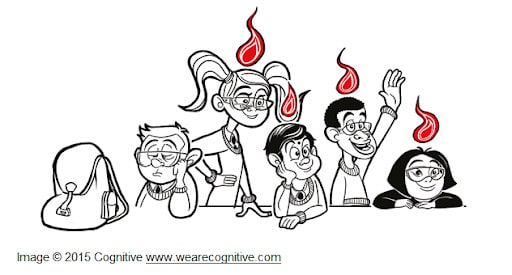How does science become part of our daily life? How do we get to realise that science is actually part of our lives? Moreover, how do we get interested in science? There are some elements of everyday life from which a special potential can be extracted, elements that can help bring science closer to people, and even make them want to get involved with science in one way or another. Specially, early ages (youth, adolescence) are key moments in people’s life for this interest to occur. There are many useful strategies when it comes to bringing science closer to the public. Some of them are focused on the cultural or social aspect, such as the case of cinema or science shown on the screen.

Popular science, the one with which we engage on the big screen, has been carried out both to convey new discoveries and to raise awareness of relevant scientific issues, such as climate change. Therefore, cinema and television have been key factors in bringing science closer to people’s daily lives; although they are not the only ones.

So then, what do we achieve with popular science? Well, among other things, science capital is generated. Now you might be wondering… what is science capital? In short, it is a theory developed by Dr. Louise Archer, based in King’s College London, which can explain patterns among young (and not so young) audiences and their interest in science. It could be defined as the sum of all knowledge, attitudes, experiences, and resources related to science that an individual accumulates throughout their life. Science capital also includes the knowledge about the type science they are more familiar with, what they think about science, people they meet who understand science, and even the daily engagement they have with science. The concept of science capital arises from the previous theories of the French sociologist Pierre Bourdieu on how an individual’s environment, including economic, social, cultural, and historical aspects; touch their personal world, coming to influence someone’s decisions and their internal dispositions towards the world. From this, the concept of science capital arises: a form of social and cultural capital associated with science and in which we could include cinema or science on screen. This concept can explain the differences between different people in terms of their various interests in science. In other words, science capital measures, in a certain way, the degree of interaction of a person with science throughout their life, and the “scientific value” that they acquire for it. According to this value, it would help scientific interest to last over time, to the point that the individual thinks of themselves as someone for whom science is there.

The tandem between science and cinema therefore constitutes a powerful tool for generating science capital and, after all, disseminating it. Nevertheless, we must not forget that it is crucial to find a balance between both tools to reach the public effectively and, at the same time, preserve the precision of the scientific message that is intended to be shown on the screen. Thus, the power of science on screen can influence attitudes towards real-world science, even spawning future scientists from those who have consumed and been inspired by science-based fiction.
Finally, movies are one of the most culturally significant tools to settle scientific contexts, especially through sci-fi movies, which can transmit messages that may move someone because of a personal experience related to what they have seen in the movie. Therefore, movies play an important role in generating emotions.

What’s more, movies can even manipulate viewers’ emotional systems, and thus a well-made movie can set, maintain, and change a viewer’s emotional tone in the short or even long term. At the same time, the success of a film depends on the emotions of the audience and the way that audience processes those emotions. For this reason, personal life experiences could play a crucial role in someone’s science capital when combined with film or on-screen science. This combination can therefore have a strong power in day-to-day changes in science, or even in long-term decision-making, such as choosing scientific careers.
But that’s another story.
To be continued…
By Margarita Segovia Roldán, @marga_segovia. Postgrad in Scientific Communication, University West of England. DBE Technician at Instituto Aragonés de Ciencias de la Salud (IACS), Zaragoza, Spain.
More information:
Articles that might interest you:
Bourdieu, Pierre; Wacquant, Loic J. D. (1992).
DeWitt, J., Archer, L. and Mau, A. (2016).
Vaughan-Lee (2015) Learning With Documentary Films: Strategies to Engage Students Education Week.
Archer, L., DeWitt, J. and Willis, B. (2014).
Maltese, A.V. and Tai, R.H. (2010).
Ho, M.-T., Ho, M.-T. and Vuong, Q.-H. (2021).
Kappel, K. and Holmen, S.J. (2019).
Howarth, Parsons, Thew (2020).





